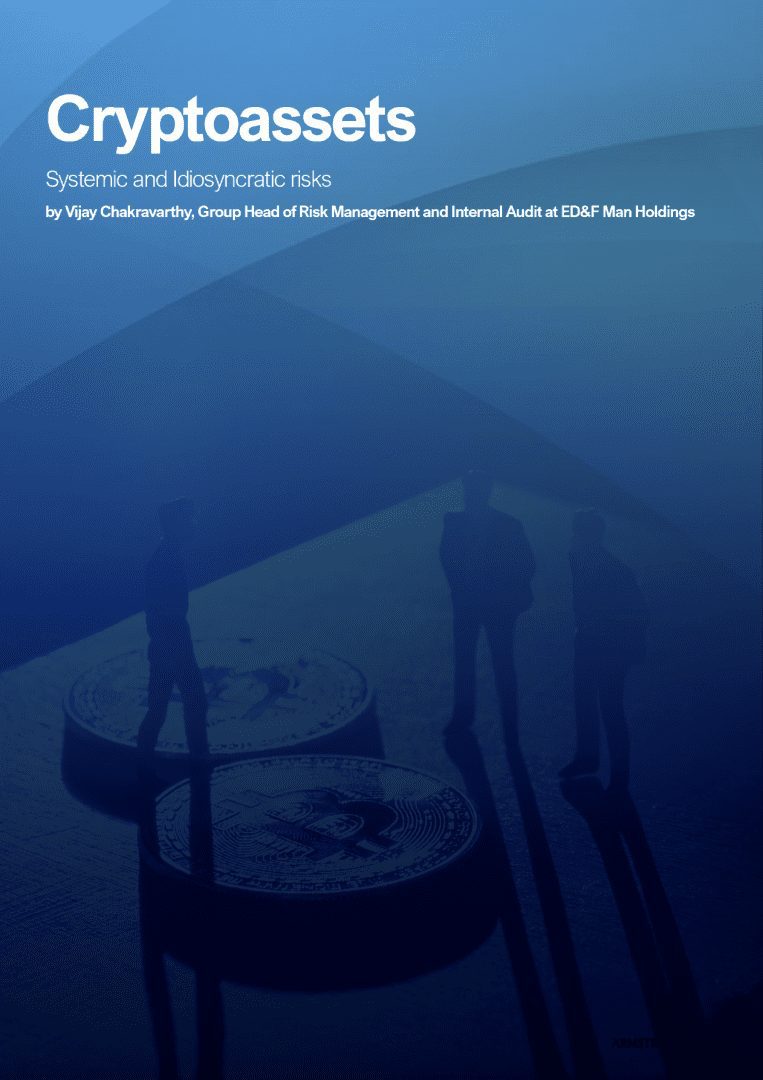by Vijay Chakravarthy, Group Head of Risk Management and Internal Audit at ED&F Man Holdings
As I put the finishing touches to this article, China has banned all cryptocurrencies including trading and related investment and financial services. The PBOC has vowed a harsh crackdown on token issuance and derivative platforms and most crypto assets are down about 6% for the day.
Right at the outset, I will try and compress all key crypto asset innovation into a small paragraph so no one is left out when they read what follows:
Blockchains are immutable and time stamped append only ledgers that can be permissioned and closed to membership (centralised) or permissionless and open (decentralised) . Crypto asset ecosystems are various applications built on blockchain ledgers maintained without a central authority across the member community most importantly to effect currency issuance and title transfer, contingent settlement, transactions and exchange anything that can be safely encrypted and transferred electronically without duplication on the internet. Layers of cryptography are used for identity verification / identity concealment , transaction data versioning and secure data transfer and to maintain the integrity of the electronic assets. The final immutable ledger version is decided not by a central authority but by the majority through computing power or ownership stake.
Although the above architecture and market structure was proposed by Satoshi Nakomoto in his Bitcoin whitepaper in October 2008 (the timing is no surprise ; trust in the global financial system was at an alltime low then), several improved versions of it have been released since then with new tokens accompanying the launch of the ecosystems. The real life applications of the above incentive system and security architecture extend far beyond crypto assets and decentralised finance . This article will also look at how to manage the common internal and external risks of the crypto asset ecosystems.


Vijay Chakravarthy
Group Head of Risk Management and Internal Audit at ED&F Man Holdings
Vijay Chakravarthy is the Group Head of Risk Management and Internal Audit at ED&F Man Holdings, a global commodity merchant and capital markets brokerage firm. He has 18 years of experience in market, credit, operational and liquidity risk management with various risk management roles previously at Deutsche Bank, Barclays Investment Bank and Standard Chartered Bank.
Vijay has a graduate engineering degree from National Institute of Technology, India and an MBA majoring in finance from London Business School. Besides leadership in risk management, Vijay is deeply interested in the analysis and delivery of digital transformation at scale for financial institutions.
The views expressed in this article are in a personal capacity.
